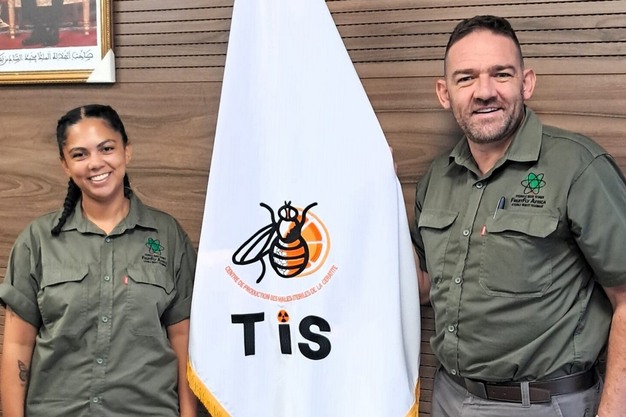FruitFly Africa (FFA) represented South Africa at the launch of Morocco's new sterile insect technique (SIT) facility, hosted by the International Atomic Energy Agency (IAEA) and attended by delegates from 17 African countries, Spain, and Austria.
SIT is a method of controlling fruit fly populations by releasing sterilised males into production areas. When these males mate with wild females, no offspring are produced, reducing the pest population over time. The technology is used internationally to establish pest-free zones and areas of low prevalence, supporting market access for fruit exports.
According to FFA manager Ghian du Toit, the three-day meeting examined opportunities and challenges in implementing SIT. "These gatherings are crucial for fostering cooperation and assessing new developments," he said. He noted that while South Africa has operated an SIT programme for years, many African countries are still considering the technology.
 © HortGro
© HortGro
Technical sessions covered the fundamentals of SIT, including operational requirements, security, and implementation strategies. Delegates also visited Morocco's new facility in Agadir, which, despite its modern design, still requires manual sorting of male and female flies—illustrating the complexity of SIT operations.
South Africa's SIT programme, established in Stellenbosch in 2002, produces 65 to 70 million sterile flies per week. It is supported by the Department of Agriculture and industry bodies and is used to protect fruit industries from pests such as the Mediterranean fruit fly, a major risk to exports to markets like China and Japan.
International developments were also presented. In Spain, for example, ginger root oil is being used to improve production efficiency and reduce pupal mortality, while field trials in other countries aim to strengthen quality control. Delegates also visited a Moroccan citrus farm where integrated pest management and SIT have reduced chemical applications and helped achieve GlobalGAP certification.
The IAEA has stated that it intends to expand SIT programmes across Africa, with countries such as Tanzania considering adoption as fruit fly infestations affect more than 60% of crops. Du Toit said regional cooperation will be essential: "If our neighbours have fruit fly infestation, chances are good it is going to spill over to us and impact our crop production."
FFA noted that ongoing investment and government support are needed to maintain and expand South Africa's SIT programme, which remains focused on local producers while also exploring opportunities to supply sterile insects to other countries.
 © HortGroFor more information:
© HortGroFor more information:
HortGro
Tel: +27 (0) 21 870 2900
Email: [email protected]
www.hortgro.co.za
